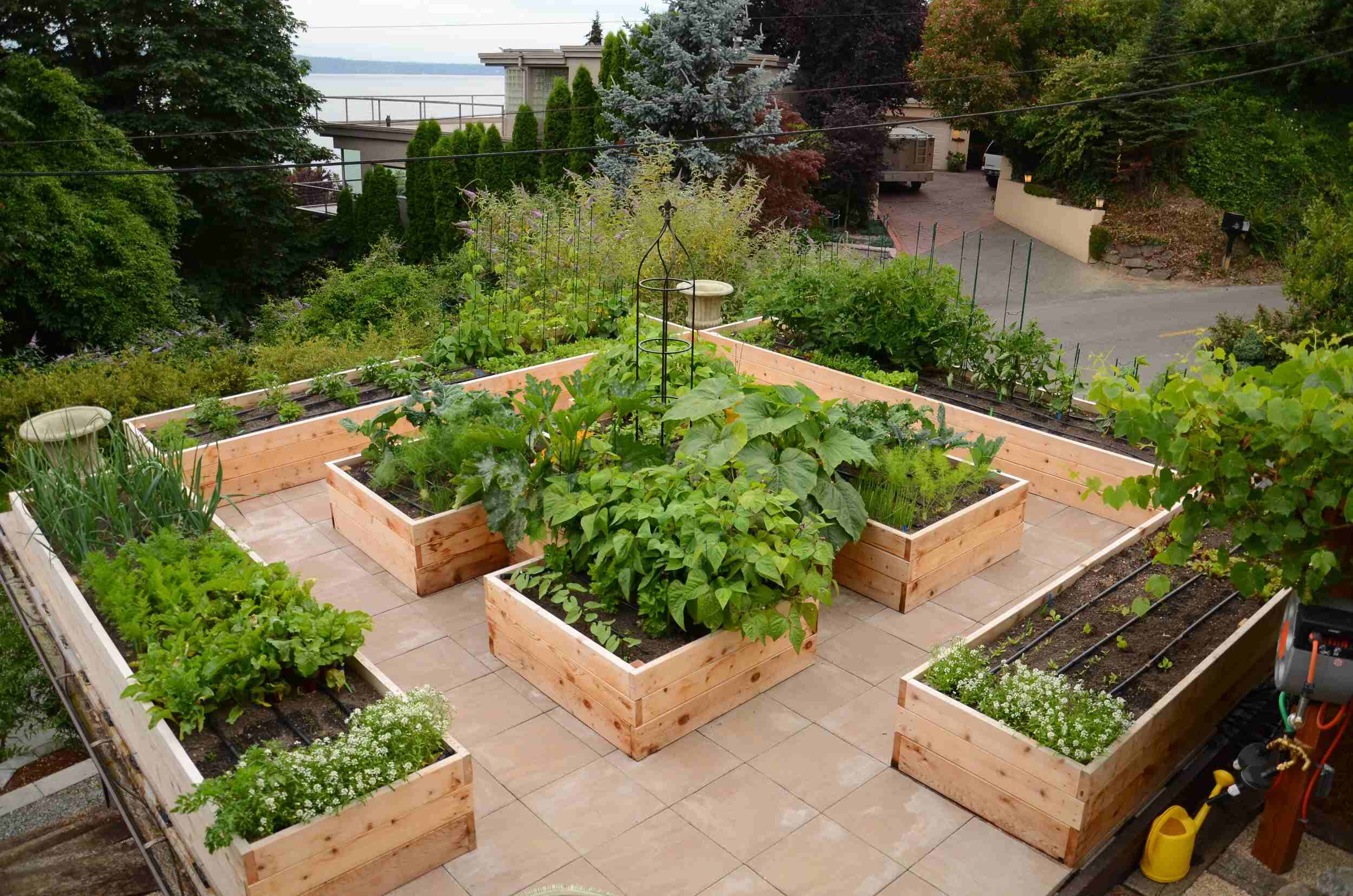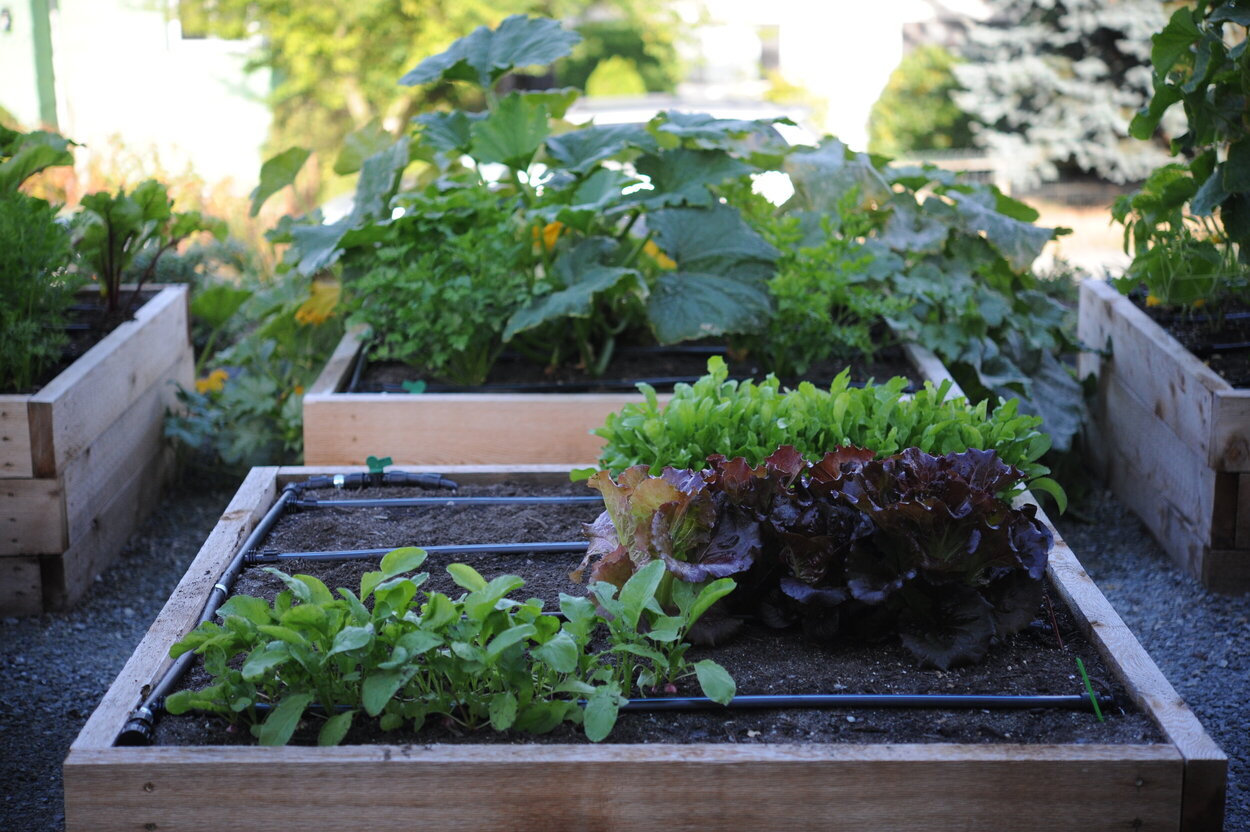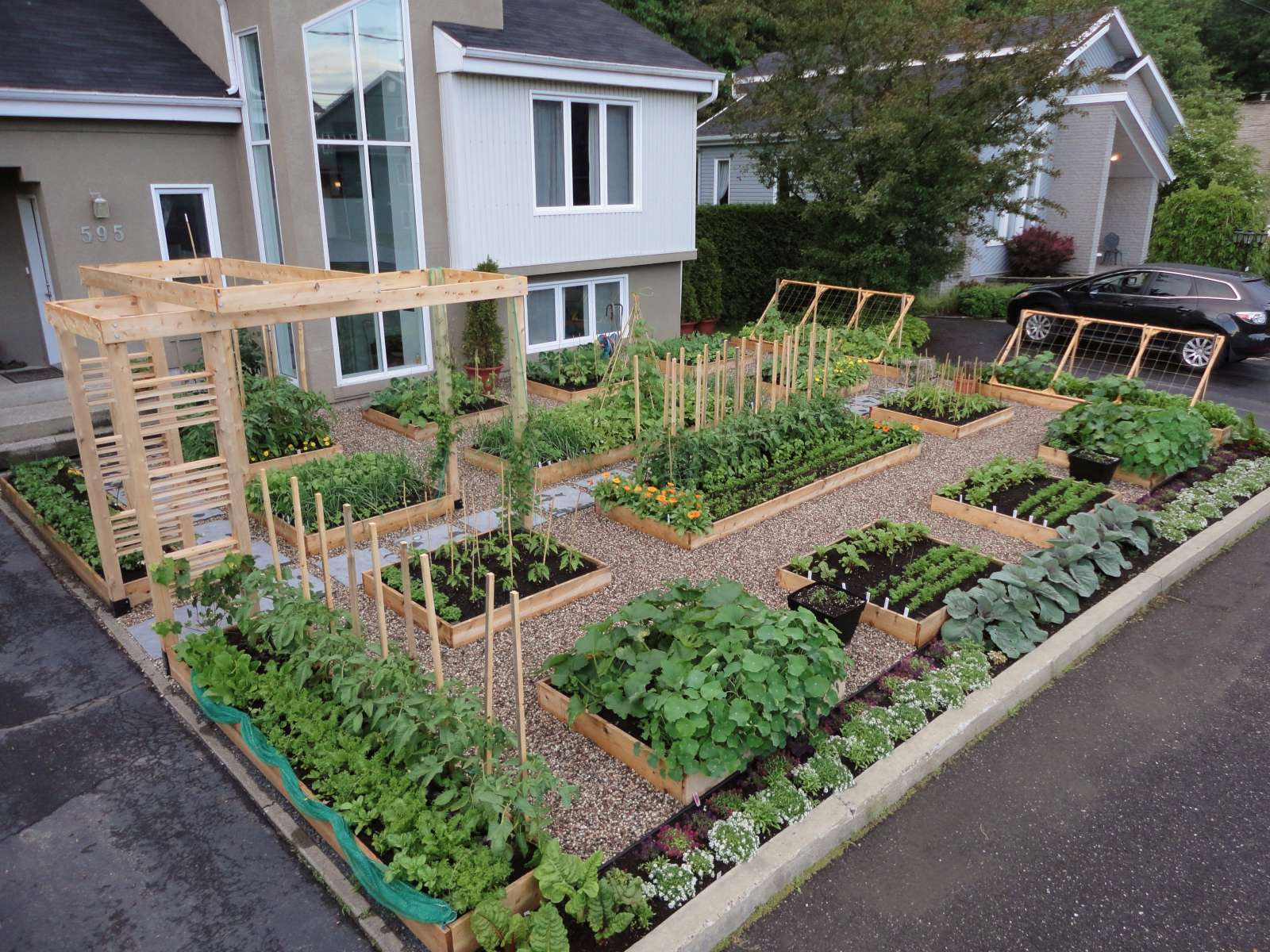Home>Gardening Basics>Understanding Soil>How To Raise The PH Of Soil


Understanding Soil
How To Raise The PH Of Soil
Modified: February 5, 2024
Learn the importance of understanding soil and how to raise its pH levels effectively. Improve your gardening success with these simple soil pH adjustment tips.
(Many of the links in this article redirect to a specific reviewed product. Your purchase of these products through affiliate links helps to generate commission for Chicagolandgardening.com, at no extra cost. Learn more)
Table of Contents
Introduction
Welcome to the world of soil pH! As a gardening enthusiast, you probably understand the importance of soil in nourishing your plants and helping them grow. However, what you may not know is that the pH level of your soil plays a vital role in determining the health and productivity of your plants. pH is a measure of the acidity or alkalinity of the soil, and it affects the availability of essential nutrients to plants.
In this article, we will explore the significance of soil pH and how it impacts plant growth. We will also discuss the various factors that can influence soil pH, such as climate, organic matter content, and the types of rocks and minerals present in your area. Additionally, we will explore different methods you can use to raise the pH of your soil if necessary.
Understanding soil pH is crucial because it directly affects the ability of plants to take up essential nutrients from the soil. Different plants thrive under different pH conditions, with some preferring acidic soil, while others prefer alkaline soil. By understanding your soil’s pH level and learning how to adjust it if needed, you can create the optimal environment for your plants to grow and thrive.
Whether you are an experienced gardener or a beginner, this article will provide you with the knowledge you need to make informed decisions about your soil pH. By the end, you will have a better understanding of why pH matters, how to test your soil’s pH level, and the methods available to raise the pH if necessary. So, let’s dive in and unravel the secrets of soil pH!
Understanding pH Levels in Soil
pH is a measure of the acidity or alkalinity of a substance on a scale of 0 to 14. A pH value of 7 is considered neutral, while values below 7 indicate acidity, and values above 7 indicate alkalinity. In the case of soil, pH is a key indicator of its chemical properties and its ability to support plant growth.
Soil pH directly impacts the availability of essential nutrients to plants. This is because different nutrients have different solubility at different pH levels. For example, certain nutrients like nitrogen, phosphorus, and potassium are readily available to plants in slightly acidic to neutral soils. On the other hand, other nutrients like iron, manganese, and zinc are more accessible to plants in slightly acidic to alkaline soils.
Understanding your soil’s pH level is essential because it can affect the overall health and vigor of your plants. If the pH is too high or too low for the plants you are growing, they may become nutrient deficient or experience nutrient toxicity. Additionally, imbalanced pH levels can impact the activity of microorganisms in the soil, affecting nutrient cycling and soil fertility.
Testing the pH of your soil is a simple process that can be done using a soil testing kit or by sending a sample to a laboratory. These tests will provide you with a pH value specific to your soil, allowing you to make informed decisions about adjusting the pH, if necessary. It’s worth noting that different plants have different pH preferences, so it’s essential to know the pH requirements of the plants you are growing.
Now that you understand the significance of soil pH and its impact on plant growth, let’s explore the factors that can affect soil pH levels in the next section.
The Importance of pH in Plant Growth
pH is a critical factor in determining the overall health and productivity of plants. It affects the availability and uptake of essential nutrients, as well as the activity of beneficial microorganisms in the soil. Understanding the importance of pH in plant growth can help you create the optimal conditions for your plants to thrive.
One of the primary reasons pH is vital for plant growth is its impact on nutrient availability. Different nutrients are most readily available to plants within specific pH ranges. For example, in slightly acidic to neutral soils, nutrients like nitrogen, phosphorus, and potassium are more accessible to plants. These nutrients are essential for plant growth, as they are involved in processes such as photosynthesis, energy transfer, and root development.
Additionally, pH influences the availability of micronutrients like iron, manganese, and zinc. These micronutrients play a crucial role in various plant functions, such as chlorophyll production, enzyme activation, and disease resistance. In slightly acidic to alkaline soils, these micronutrients are more readily available to plants. If the pH deviates significantly from the optimal range, plants may experience nutrient deficiencies or toxicities, leading to stunted growth, yellowing leaves, or other symptoms of nutrient imbalance.
The impact of pH on plant growth extends beyond nutrient availability. pH affects the activity of microorganisms in the soil, such as bacteria, fungi, and earthworms. These microorganisms play a vital role in nutrient cycling, organic matter decomposition, and soil structure improvement. Certain soil bacteria, for example, perform nitrogen fixation, converting atmospheric nitrogen into a form that plants can use. The activity of these beneficial microorganisms is optimized within specific pH ranges, and imbalanced pH levels can disrupt their function, leading to nutrient imbalances and reduced soil fertility.
Furthermore, pH can also influence the availability and effectiveness of soil amendments and fertilizers. Many soil amendments and fertilizers are formulated based on specific pH requirements. For example, certain soil amendments are designed to raise pH in acidic soils, while others are used to lower pH in alkaline soils. Understanding your soil’s pH level allows you to make informed decisions about the type and application of soil amendments and fertilizers, ensuring maximum effectiveness.
In summary, pH plays a crucial role in plant growth by influencing nutrient availability, microbial activity, and the effectiveness of soil amendments and fertilizers. By maintaining the optimal pH range for your plants, you can promote healthy growth, vibrant foliage, and abundant harvests.
Factors Affecting Soil pH
Soil pH is influenced by a variety of factors, both natural and human-induced. Understanding these factors can help you identify the potential causes of pH imbalances in your soil and make appropriate adjustments. Here are some of the key factors that can affect soil pH:
- Parent Material: The type of rock and minerals from which the soil is formed greatly influences soil pH. For example, soils derived from limestone or chalk tend to be alkaline, while soils formed from granite or sandstone are typically more acidic. The composition of the parent material contributes to the initial pH of the soil.
- Climate: Climate plays a significant role in soil pH. In regions with high rainfall, called humid regions, rainfall can leach out basic minerals, making the soil more acidic over time. Conversely, in arid or semi-arid regions with limited rainfall, the accumulation of salts can make the soil more alkaline. The temperature of an area can also influence soil pH, as soil microorganisms and chemical reactions are affected by temperature fluctuations.
- Vegetation: The types of plants growing in an area can influence soil pH. Some plants, referred to as “acid-loving” or ericaceous plants, such as blueberries and rhododendrons, thrive in acidic soils. These plants release organic acids into the soil through their root systems, which can lower the soil’s pH. On the other hand, plants like legumes have a symbiotic relationship with nitrogen-fixing bacteria that can increase the pH of the soil.
- Organic Matter: The presence of organic matter in the soil can have an impact on pH. Organic matter acts as a buffer, helping to maintain a stable pH level. It releases acids that help to lower pH in alkaline soils and compounds that can raise pH in acidic soils. The decomposition of organic matter also releases carbon dioxide, which can combine with water to form carbonic acid, further influencing pH.
- Water Quality: The quality of the irrigation water used can affect soil pH. If the water source has high levels of alkalinity or acidity, it can gradually alter the pH of the soil over time. It is important to monitor the pH of the irrigation water and make adjustments if necessary.
- Human Activities: Human activities, such as the use of fertilizers, can impact soil pH. Some fertilizers, like ammonium-based fertilizers, can lower soil pH over time, making it more acidic. Over-application of lime or other alkaline amendments can raise the pH to an excessively alkaline level. Additionally, pollution from industrial activities or the accumulation of urban waste can introduce substances that alter soil pH.
It is important to note that these factors interact with one another, and changes in one factor can influence the overall pH of the soil. Understanding the factors that contribute to soil pH can help you make informed decisions about how to manage and adjust the pH level of your soil, ensuring an optimal environment for plant growth.
Testing Soil pH
Testing the pH of your soil is an essential step in understanding the current pH level and determining whether any adjustments are needed. Fortunately, there are several methods available to test the pH of your soil, ranging from DIY kits to professional laboratory analysis. Here are some common methods for testing soil pH:
- Soil Testing Kits: Soil testing kits are readily available and provide a convenient way to test the pH of your soil. These kits typically include a testing solution or test strips that change color based on the pH level of the soil. By following the instructions provided with the kit, you can obtain a basic idea of your soil’s pH. However, keep in mind that soil testing kits may not provide the most accurate results, so they are best used as a general indication of pH.
- Digital Soil pH Meters: Digital soil pH meters are another option for testing soil pH. These meters have a probe that is inserted into the soil, and they provide an instant pH reading on a digital display. Digital meters are more accurate than soil testing kits, but they may require calibration and periodic maintenance to ensure accurate readings.
- Professional Laboratory Analysis: For a more precise and comprehensive analysis of soil pH, you can send a soil sample to a professional laboratory. These labs use specialized equipment and techniques to measure pH and can provide you with a detailed report of your soil’s pH as well as other important soil parameters. This method is particularly useful if you require detailed information about your soil’s pH for specific plant species or if you suspect significant pH imbalances.
When performing a soil pH test, it is important to take multiple samples from different areas of your garden or planting space. This will help account for any variations in pH within your soil. Collect samples from a depth of 6 to 8 inches, as this is where the majority of plant roots are located. Ensure that your sampling equipment is clean to avoid any contamination that could affect the accuracy of the test results.
Once you have determined your soil’s pH level, you can compare it to the preferred pH range for the plants you are growing. This information can typically be found on plant labels or in gardening resources. If your soil’s pH is outside the recommended range, you may need to adjust it using various methods, which we will explore in the next section.
Regularly testing your soil’s pH is important to monitor any changes and make appropriate adjustments over time. By understanding the pH of your soil, you can create the optimal environment for your plants, ensuring they have access to the necessary nutrients for healthy growth and productivity.
Methods to Raise Soil pH
If your soil pH is too low (acidic), it may be necessary to raise the pH to create a more balanced and suitable environment for your plants. There are several methods you can use to raise soil pH, depending on the severity of the acidity and the specific needs of your plants. Here are some common methods for increasing soil pH:
- Using Agricultural Lime: Agricultural lime, also known as garden lime or limestone, is a popular and effective method for raising soil pH. It is composed of calcium carbonate or calcium and magnesium carbonate and works by neutralizing the acidity in the soil. The amount of lime required depends on the current pH level and the texture of your soil. It is advisable to conduct a soil test or consult with a local agricultural extension office to determine the appropriate amount of lime to apply.
- Incorporating Wood Ash: Wood ash from burned plant material, such as wood or wood pellets, can be a good source of alkaline materials to raise soil pH. Wood ash contains potassium carbonate, which helps neutralize acidity in the soil. However, it is essential to use wood ash sparingly, as excessive application can elevate pH levels too much and cause nutrient imbalances. Be mindful of the type of wood used and avoid using ash from treated wood or materials that may contain harmful chemicals.
- Adding Dolomitic Lime: Dolomitic lime is a type of lime that contains both calcium and magnesium carbonates. It can be beneficial for soils low in both pH and magnesium. Dolomitic lime works similarly to agricultural lime by neutralizing acidity and raising the pH of the soil. It is important to follow recommended application rates based on a soil test to avoid over-application and causing an excessively high pH.
- Applying Bone Meal or Eggshells: Bone meal and crushed eggshells are rich in calcium, which can help raise soil pH. They can be incorporated as organic amendments into the soil, slowly releasing calcium and gradually raising pH levels. However, it’s worth noting that these methods may take longer to impact soil pH as compared to lime. Additionally, they provide additional benefits such as supplying essential nutrients to plants.
- Using Coffee Grounds: Coffee grounds are acidic, but when incorporated into the soil, they can have an alkalizing effect over time. The alkaline properties come from the minerals released as the coffee grounds break down. It is recommended to use coffee grounds sparingly and mix them well into the soil to prevent excessive acidity before the alkalizing effects take place.
- Using Compost: Incorporating compost into your soil can improve its overall fertility and pH balance. Compost acts as a natural buffer, helping to stabilize pH levels, making it ideal for adjusting mildly acidic soils. Compost adds organic matter to the soil, which encourages beneficial soil microorganisms and improves overall soil structure and nutrient availability for plants.
When using any method to raise soil pH, it is important to be mindful of the plant’s specific pH requirements and avoid over-application, as excessively high pH levels can create nutrient imbalances. It is advisable to follow the recommendations provided by a soil test or consult with a local agricultural extension office for guidance.
By selecting the appropriate method for raising soil pH and applying it correctly, you can create an optimal growing environment for your plants, ensuring they have the necessary conditions to thrive and reach their full potential.
Using Agricultural Lime
Agricultural lime, also known as garden lime or limestone, is a widely used method for raising soil pH. It is composed of calcium carbonate or calcium and magnesium carbonate, and it works by neutralizing acidity in the soil. When applied correctly, agricultural lime can effectively raise the pH, creating a more balanced soil environment for optimal plant growth.
The first step in using agricultural lime is to determine the current pH level of your soil. Conducting a soil test will provide accurate information about the soil’s pH and help you determine the amount of lime needed. Soil tests are typically available through local agricultural extension offices or can be done with at-home testing kits.
Once you have determined the appropriate amount of agricultural lime to apply, you can spread it evenly over the soil surface. It is recommended to mix the lime into the soil thoroughly to ensure even distribution and maximize contact with the soil particles.
It’s important to note that agricultural lime takes time to react and for the pH to adjust. The pH increase is not immediate and may take several months to become fully effective. Regular soil testing can help monitor the progress and determine if additional applications are needed.
When applying agricultural lime, it’s crucial to follow the recommended rates based on the soil test results. Over-application of lime can raise pH levels too high, leading to nutrient imbalances and potentially harmful effects on plants. On the other hand, under-application may not achieve the desired pH adjustment.
It is also important to consider the texture of the soil when using agricultural lime. Sandy soils require less lime compared to clay or loam soils because they tend to have a lower buffering capacity. The buffering capacity refers to how well the soil can resist changes in pH. Soils with a high buffering capacity may require higher amounts of lime to achieve the desired pH adjustment.
When handling agricultural lime, it is recommended to wear appropriate protective gear, such as gloves and a mask, as it can be dusty. Lime should be stored in a dry place to prevent moisture absorption, as moisture can reduce its effectiveness.
Agricultural lime is a reliable and effective method for raising soil pH. It provides a long-lasting solution to acidic soil conditions, allowing plants to access essential nutrients more efficiently. By following proper application guidelines and monitoring the pH levels, you can create a balanced soil environment that promotes healthy plant growth.
Incorporating Wood Ash
Wood ash can be a valuable resource for raising soil pH, especially in acidic soils. It is a byproduct of burning wood or wood pellets and contains alkaline materials that can help neutralize acidity in the soil. When used correctly, incorporating wood ash can be an effective method for adjusting soil pH and creating a more conducive environment for plant growth.
Before using wood ash, it’s important to ensure that the source of the ash is from clean, untreated wood. Avoid using ash from wood that has been treated with chemicals or that may contain contaminants.
Wood ash should be applied evenly over the soil surface. It’s beneficial to incorporate the ash into the top layer of the soil to ensure proper distribution and contact with soil particles. Mixing the ash into the soil with a gardening tool such as a rake or shovel will help it integrate and react with the soil more efficiently.
It’s important to note that wood ash is highly concentrated in alkaline compounds, so it should be used sparingly and carefully monitored. Overuse of wood ash can raise the pH of the soil too much, resulting in excessive alkalinity and nutrient imbalances. It is recommended to start with small amounts and gradually increase the application if necessary, based on regular soil testing.
One consideration when using wood ash is its effect on other nutrient levels. Wood ash contains potassium and other essential minerals, which can provide additional benefits to the soil and plants. However, excessive application of wood ash can lead to an imbalance in nutrient levels. It’s crucial to monitor the nutrient content of the soil and adjust or supplement accordingly to maintain a well-balanced soil profile.
Although wood ash can be beneficial for raising soil pH, it is not suitable for all situations. Soils that are already alkaline or have a pH above the desired range may not benefit from wood ash application. Additionally, plants that prefer acidic conditions may be negatively affected by wood ash, so it’s crucial to consider the pH requirements of the specific plants you are growing.
Regular soil testing is recommended when using wood ash to monitor the pH and nutrient levels of the soil. This will help you determine if adjustments need to be made or if other methods should be combined to achieve the desired pH balance.
By incorporating wood ash into your soil, you can effectively raise the pH and create a more favorable environment for plant growth. However, it’s essential to use it responsibly and in moderation to avoid any adverse effects on soil health and plant development.
Adding Dolomitic Lime
Dolomitic lime is a type of lime that contains both calcium and magnesium carbonates. It is commonly used to raise soil pH, especially in soils that are acidic and deficient in magnesium. Adding dolomitic lime can effectively increase the pH of the soil and provide a balanced source of essential nutrients for plant growth.
Before adding dolomitic lime to your soil, it’s important to conduct a soil test to determine the specific needs of your soil. The soil test will provide information about the current pH level and nutrient composition of the soil, allowing you to gauge the appropriate amount of dolomitic lime required.
Like other forms of lime, dolomitic lime should be applied evenly over the soil surface. To ensure proper distribution and integration with the soil, it’s advisable to mix the lime into the top few inches of soil using a rake or garden hoe.
The application rate of dolomitic lime will depend on the pH requirements of the specific plants you are growing and the initial pH level of your soil. It is best to consult your soil test results or seek advice from a local agricultural extension office to determine the correct amount of dolomitic lime to apply.
It’s important to note that adding dolomitic lime will raise the pH of the soil over time. The rate at which the pH increases will depend on factors such as soil type, organic matter content, and the amount of lime applied. Regular soil testing is recommended to monitor pH changes and adjust the application of dolomitic lime if necessary.
In addition to raising soil pH, dolomitic lime also provides a source of calcium and magnesium, two essential nutrients for plant growth. Calcium is important for cell development, nutrient uptake, and overall plant health. Magnesium is a crucial component of chlorophyll, the pigment responsible for photosynthesis. By incorporating dolomitic lime into the soil, you can replenish these nutrients and promote healthy plant growth.
It’s essential to note that dolomitic lime is not suitable for all soils. If your soil already has sufficient magnesium levels or a high pH, adding dolomitic lime may lead to nutrient imbalances or excessively alkaline conditions. It’s crucial to consider the specific needs and characteristics of your soil before applying dolomitic lime.
By adding dolomitic lime to your soil, you can effectively raise pH levels, supply essential nutrients, and create a more suitable environment for your plants. However, always use dolomitic lime judiciously and monitor soil conditions to ensure long-term soil health and optimal plant growth.
Applying Bone Meal or Eggshells
Applying bone meal or eggshells to your soil can be a natural and effective method of raising soil pH. Both bone meal and eggshells are rich in calcium, which acts as an alkaline amendment to help increase pH levels in acidic soils. This method not only helps adjust pH but also provides additional benefits for plant growth.
Bone meal is made from ground-up animal bones, usually from cattle or fish. It is a slow-release fertilizer that gradually releases nutrients, including calcium, phosphorus, and trace minerals. When applied to the soil, bone meal decomposes slowly, releasing calcium and raising the soil’s pH over time. It is best to incorporate bone meal into the soil prior to planting or apply it as a top dressing around established plants.
Eggshells are another readily available source of calcium that can help raise soil pH. Crushed eggshells can be added directly to the soil, providing a slow-release source of calcium that helps neutralize acidity. The shells break down gradually, releasing calcium into the soil and improving its pH over time. It’s beneficial to crush the eggshells into small pieces before adding them to the soil to enhance their decomposition rate.
Both bone meal and eggshells offer additional benefits beyond pH adjustment. Calcium, as a vital nutrient, plays a crucial role in cell development, plant structure, and disease resistance. It also aids in the absorption and utilization of other essential nutrients. By incorporating bone meal or eggshells into the soil, you not only raise pH but also provide a readily available source of calcium to support healthy plant growth.
It’s important to note that applying bone meal or eggshells may not result in an immediate change in soil pH. The adjustment occurs gradually over time as these organic materials decompose and release calcium into the soil. Regular soil testing can help monitor the pH changes and determine if additional applications are necessary.
When using bone meal or eggshells, it’s crucial to consider the specific needs of your plants and the existing pH level of your soil. Some plants prefer slightly acidic soils, so it’s important to strike a balance between raising the pH and meeting the specific requirements of your plants. It’s recommended to conduct a soil test to determine the optimal pH range for your specific plants.
In summary, applying bone meal or eggshells to your soil can be a natural and effective method of raising pH levels in acidic soils. These organic amendments not only adjust the pH but also provide a valuable source of calcium for plant growth. By incorporating bone meal or eggshells into your soil, you can create a more balanced environment for your plants and promote their overall health and productivity.
Using Coffee Grounds
Did you know that your morning cup of coffee can also benefit your plants? Utilizing coffee grounds as a soil amendment can be an effective method of raising soil pH, especially in acidic soils. Coffee grounds contain organic acids that, over time, can help increase the pH levels in the soil, creating a more balanced environment for plant growth.
Using coffee grounds as a soil amendment is simple. After enjoying your coffee, save the grounds and spread them evenly over the soil surface in your garden or around your plants. It’s best to mix the coffee grounds into the top few inches of soil to ensure even distribution.
While coffee grounds can gradually increase soil pH by raising alkalinity, it’s important to note that the alkalizing effect is relatively mild. This makes coffee grounds a suitable option for adjusting the pH of slightly acidic soils or maintaining a balanced pH in neutral soils. For highly acidic soils, additional amendments or methods may be necessary to achieve the desired pH level.
In addition to raising soil pH, coffee grounds provide other benefits to plants and the soil. They are a valuable source of organic matter, which improves soil structure, water retention, and nutrient availability. Coffee grounds also contain nutrients like nitrogen, potassium, and phosphorus, which can contribute to the overall fertility and health of the soil.
When utilizing coffee grounds, it’s important to use them in moderation. Excessive application of coffee grounds can potentially lead to high levels of caffeine and tannins in the soil, which may have negative effects on plant growth. It’s recommended to mix the coffee grounds with other organic matter, such as compost, to ensure a balanced nutrient content and avoid any negative impacts.
It’s worth mentioning that coffee grounds are more effective at raising soil pH when used in combination with other alkaline amendments. If your goal is to significantly increase pH levels in highly acidic soils, it’s advisable to consider other methods, such as agricultural lime or wood ash, in conjunction with coffee grounds.
In summary, using coffee grounds as a soil amendment can be a natural and practical method for raising soil pH. Their gradual alkalizing effect, combined with the additional benefits they offer, makes coffee grounds a valuable resource for maintaining a balanced soil environment. By incorporating coffee grounds into your soil, you can help promote healthy plant growth and enhance the overall fertility of your garden.
Using Compost
Compost, often referred to as “black gold” in the gardening world, is a valuable resource for improving soil fertility and structure. It can also help raise soil pH, making it an excellent option for adjusting acidity levels in your garden. Adding compost to the soil not only helps create a more balanced pH but also provides numerous benefits for plant growth.
Compost is made by decomposing organic matter such as leaves, grass clippings, food scraps, and other plant material. When compost is incorporated into the soil, it acts as a natural buffer, helping to maintain a stable pH level. It contains a wide range of essential nutrients and beneficial microorganisms that improve soil health and support overall plant growth.
When using compost to raise soil pH, it’s important to note that the effect is gradual and may not be as pronounced as using other pH-raising amendments. However, the long-term benefits of compost on soil fertility make it a valuable addition to any garden.
To use compost effectively, spread a layer of it over the soil surface and mix it into the top few inches of soil. This ensures even distribution and maximizes the contact between the compost and soil particles. For more significant pH adjustments, you may need to apply compost several times over a period of years.
Aside from its pH-adjusting properties, compost offers other advantages. It improves soil structure, enhancing its ability to retain moisture, drain excess water, and provide aeration to plant roots. Compost also promotes the growth of beneficial microorganisms in the soil, contributing to nutrient cycling and overall soil fertility.
When utilizing compost, it’s important to consider the quality of the compost you are using. Good-quality compost should be fully decomposed, dark in color, and have a pleasant earthy scent. Avoid using compost that is not fully decomposed or contains potentially harmful ingredients such as pesticides or chemicals.
Regular application of compost over time will help maintain a healthy soil pH and create an optimal growing environment for your plants. It is an excellent way to sustainably improve soil health, promote plant growth, and reduce the need for synthetic fertilizers.
Lastly, when using compost to raise soil pH, it is essential to understand the specific pH requirements of the plants you are growing. Some plants prefer slightly acidic or alkaline soils, so it’s important to strike a balance between adjusting the pH and meeting the specific needs of your plants.
In summary, incorporating compost into your soil is a natural and effective method for raising soil pH. It not only helps to create a more balanced pH, but it also provides numerous benefits for soil health and plant growth. By utilizing compost in your garden, you can improve soil fertility, enhance moisture retention, and maintain an optimal growing environment for your plants.
Conclusion
Understanding soil pH is essential for successful gardening and plant growth. The pH level of the soil directly affects nutrient availability, microbial activity, and overall soil health. By maintaining the optimal pH range for your plants, you can ensure they have access to the necessary nutrients and create a conducive environment for their growth and development.
In this article, we have explored the significance of soil pH, the factors that can influence pH levels, and various methods to raise soil pH as needed. From using agricultural lime and incorporating wood ash to adding dolomitic lime, applying bone meal or eggshells, and utilizing coffee grounds or compost, each method offers its unique benefits and considerations.
When adjusting soil pH, it’s important to remember the specific needs of your plants and the existing pH characteristics of your soil. Conducting regular soil tests to monitor pH levels, nutrient content, and other relevant parameters is crucial for making well-informed decisions about pH adjustment methods and their application rates.
Furthermore, always consider the recommendations provided by local agricultural extension offices, gardening experts, or soil professionals. They can provide valuable guidance based on your specific gardening needs and environmental conditions.
Lastly, remember that soil health is essential for long-term plant growth and sustainability. Incorporating organic matter, using sustainable practices, and maintaining a balance in soil pH will lead to healthier plants, improved nutrient availability, and enhanced resilience against pests and diseases.
By understanding soil pH and using appropriate methods to adjust it, you can create an optimal environment for your plants to thrive. Whether you’re a novice gardener or a seasoned horticulturist, the knowledge gained from understanding and managing soil pH will contribute to the overall success of your garden and the satisfaction you derive from cultivating your own piece of paradise.








